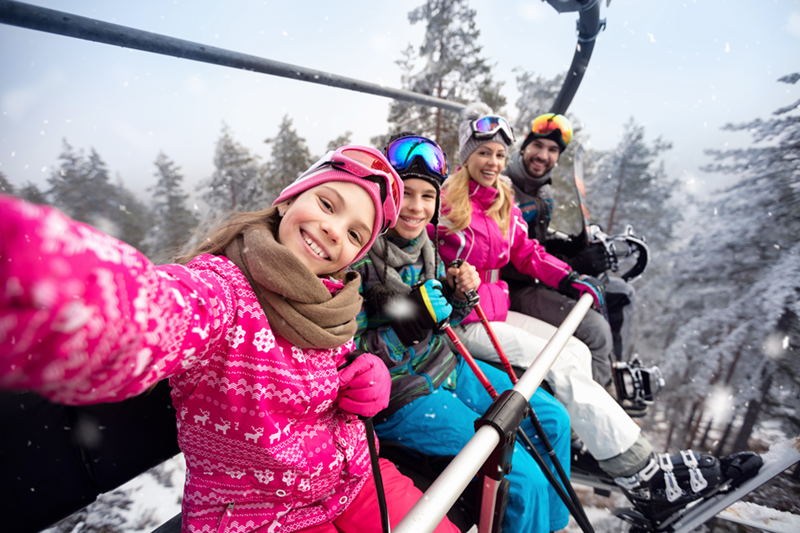The season’s first snowfall sends fresh powder enthusiasts (skiers and snowboarders) straight to the nearest slopes. Ski fans make the pilgrimage each winter expecting safe and fun environments. But skiing and snowboarding accidents occur each season, causing severe injuries and even fatalities. These accidents aren’t relegated to the backcountry, unregulated slopes either. Accidents can happen at the highest-profile, closely managed ski resorts. One such event occurred at Vail Resorts which led to costly litigation for the resort.
Safety is a crucial concern for ski resorts of all sizes. These resorts are responsible for the safety and well-being of their guests. In addition, prioritizing safety helps ski resorts avoid lawsuits and fines. This post will examine common risks, and simple steps owners can take to care for guests and shield their businesses from negative consequences.
Ski resort safety concerns
Data from the National Ski Areas Association shows that in the 2022 to 2023 ski and snowboard season, 43 people lost their lives to accidents in the United States. They also reported 53 catastrophic injuries. According to Johns Hopkins Hospital, there are about 600,000 injuries per year from skiing and snowboarding.
Falling and colliding with objects or other skiers is the most common cause of accidents. Other causes include:
- Loss of control by skiers and snowboarders
- Skiing too closely to trees, rail guards, and other stationary objects
- Equipment failure or malfunction
- Not wearing a helmet
- Poor form, i.e., not maintaining a good stance
- Skier fatigue
- Skier impairment with drugs or alcohol
- Steep terrain or rough patches of slope
- Inadequate or unlit signage
- Deteriorated ski tracks
Avalanches, while rare, are still a top safety concern for ski resorts, as they have the potential to injure many people at once.
Also read: How To Create an Event Crowd Management Plan (And Why It’s So Important)
Establishing and maintaining safety protocols
Winter sports are inherently risky. But ski resorts can take steps to educate their patrons, boost safety protocols among staff, and manage risks effectively.
Limit ticket sales
By capping ticket sales, ski resorts can manage the safety of large crowds during holiday rushes and weekends. Another crowd control strategy is to ask guests to reserve their spots at least 24 hours in advance. In addition, closely monitoring the number of people on the slopes will help to limit the possibility of collisions caused by overcrowding.
Enforce resort rules
Guests that willingly flaunt ski resort safety rules should be removed. For example, Mammoth Ski Resort takes photos of rule breakers’ ski passes on their first offense. On the second offense, they are banned from the park until they go through the “Ride Another Day” safety program.
Monitor drug and alcohol use
Skiers and snowboarders travel at speeds often reached by cars without the safety features or protection offered by a car. Ski resort staff should never allow intoxicated guests on the slopes.
Encourage guests to report unsafe behavior and conditions
Guests should feel like they are part of the ski resort community. Managing the safety of that community is the responsibility of everyone on the mountain. Letting guests know this can go a long way in offsetting risks.
Establishing safety programs
Safety is an ever-present issue that affects everyone at a ski resort. As such, resort owners should create safety programs to keep everyone safe. Employees must be adequately trained in emergency response and spotting unsafe conditions on the slopes.
Customers, especially novice skiers and snowboarders, need proper education in form and best practices. Other safety programs include adding more ski members or establishing a family-only area of the slopes to help safeguard inexperienced skiers and snowboarders.
Scheduling regular safety inspections of ski lifts and rental equipment for customers is another common tactic that can prevent millions of dollars of losses in litigation damages and ensure that the memories made on the slopes are positive.
Also read: Specialty Insurance Basics for the Amusement Industry
The appropriate insurance policy is your last line of defense against disasters
Ski resort owners may take all the appropriate safety precautions and still fall victim to fluke accidents or disasters—therefore, possible litigation. For example, the untimely death of Rep. Sonny Bono (R-Calif.)—of Sonny and Cher—in a 1998 skiing accident still looms heavy over the entire ski resort industry many years later. The only thing more unpredictable than mother nature is human nature.
McGowan Allied Specialty Insurance has over 30 years of experience helping the amusement industry manage its unique risks. MASI’s portfolio of specialty insurance products allows Ski resort owners to create individualized coverage that best suits their needs. Let us review the best way to protect your business.
